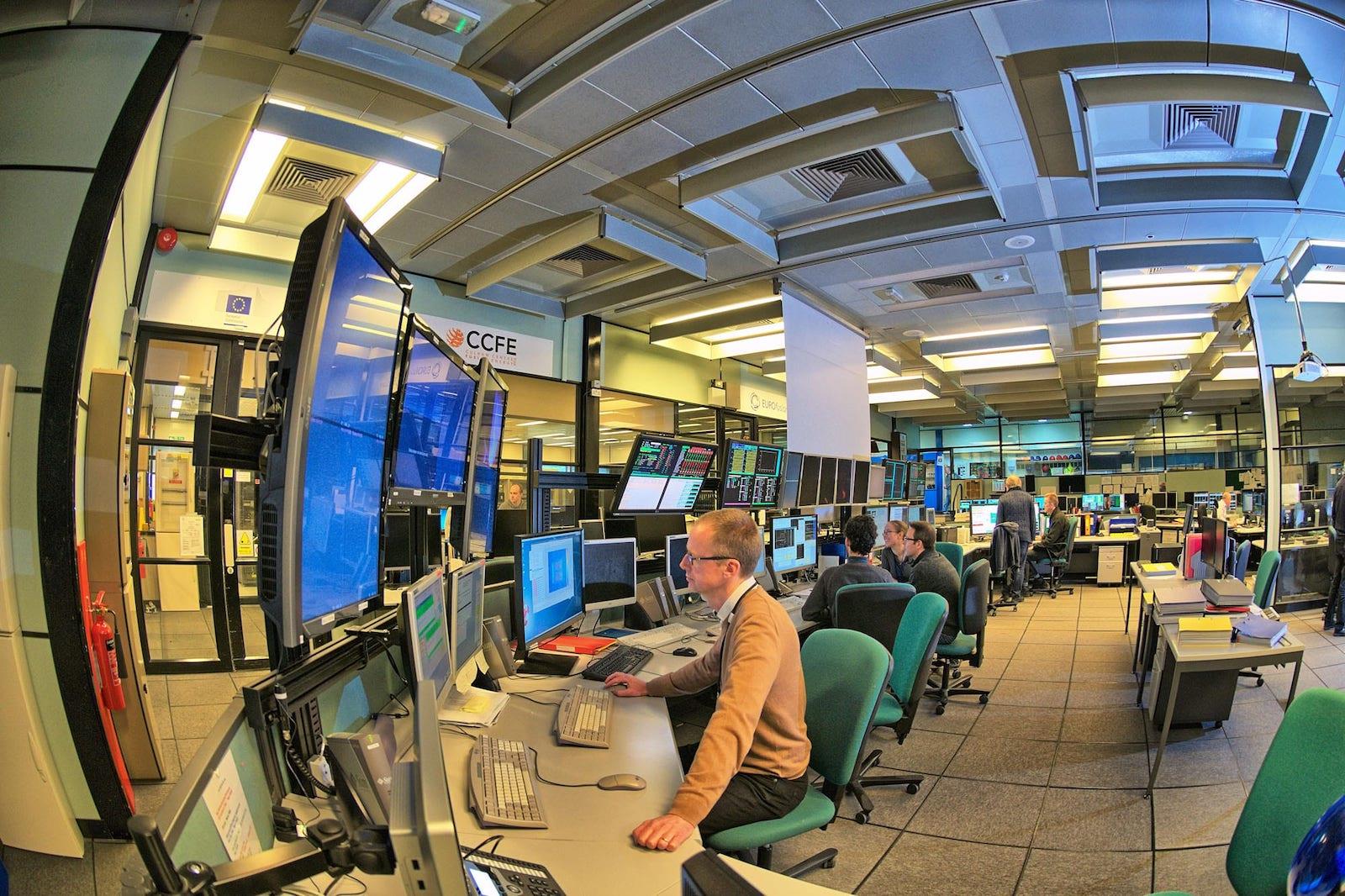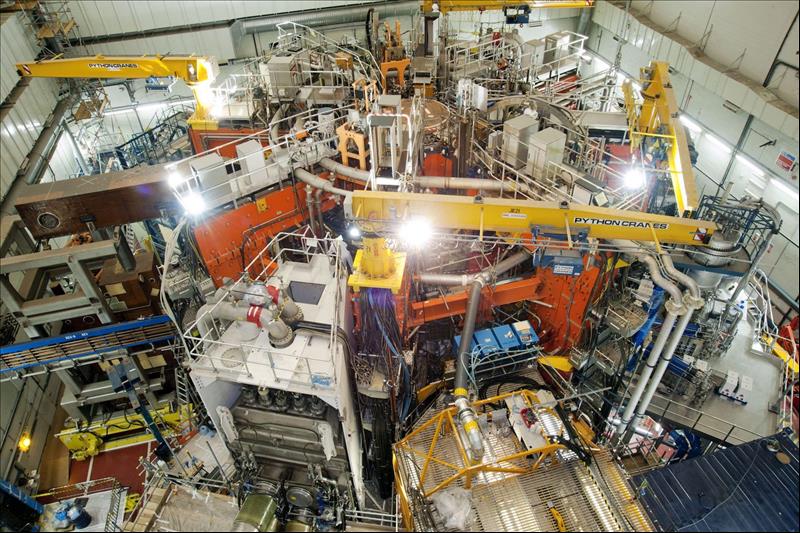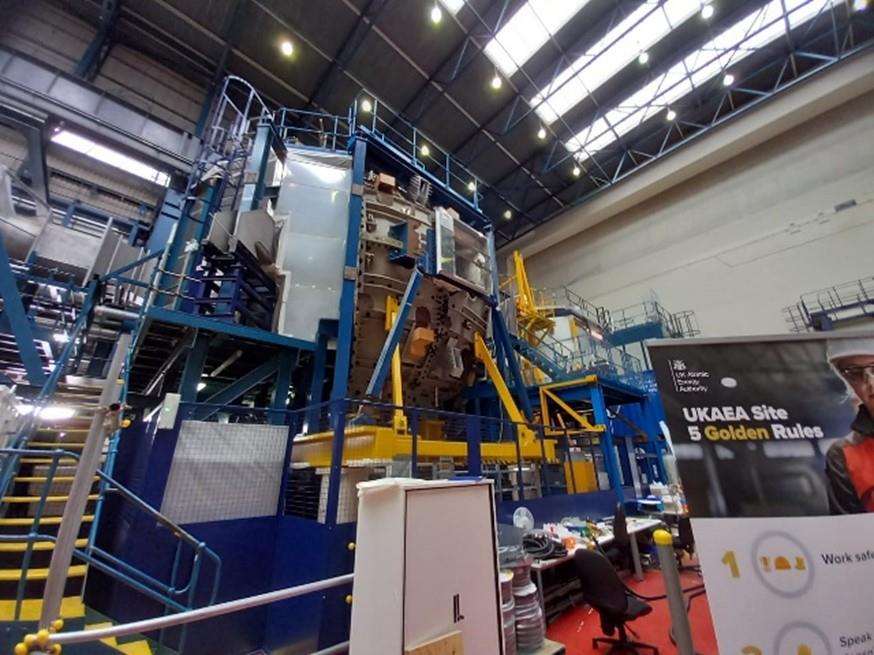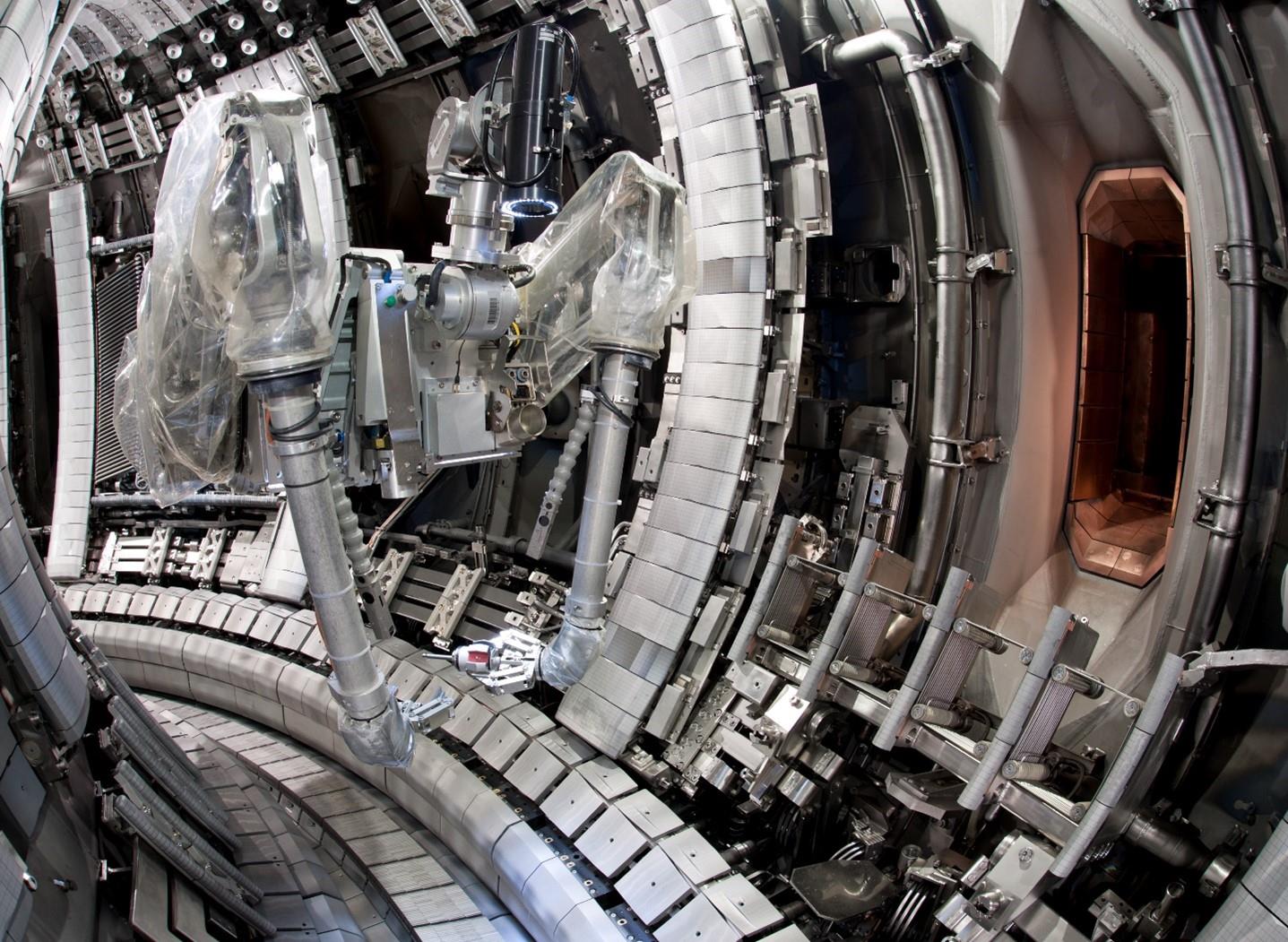
Visiting The World's Largest Fusion Reactor
I am standing in the gallery of the control room of the Joint European Torus (JET) – the world's largest tokamak reactor, situated in the Culham, England. Built as a cooperative project of European nations, JET has been operating for over 40 years, serving as a workhorse for international cooperation in plasma and fusion research.
In December 2021, JET achieved the latest world record for the amount of energy generated by fusion reactions under controlled conditions. During a 5 second pulse, JET produced 59 MJ of thermal energy from fusion of deuterium and tritium. Taking account of the amount of energy absorbed in heating the plasma to its 100 million degree temperature, JET came within a factor of 3 of reaching so-called scientific breakeven.
As I mentioned in the previous article there is now no reasonable doubt concerning the feasibility of generating large net energy outputs by fusion reactors of the tokamak type. A large portion of the credit goes to experiments on JET, which have produced a wealth of knowledge and experience in the course of four decades of operation.
I always wanted to see how a large tokamak fusion reactor is operated. With me on the gallery was JET Senior Exploitation Manager Fernanda Rimini, PhD (physics). She explained what was happening in the control room and kindly responded to my flood of questions.
JET operates in pulses (“shots”) up to about 10 seconds long. Each shot constitutes a separate experiment, and the operators generally change the parameters between shots. Typically one shot is run about every 30-40 minutes, to allow time not only to permit the reactor coils and other systems to cool down but also to analyze the data needed to make decisions about the next experiment. Sometimes the scientists ask for more time for thinking and discussion.
Each shot is preceded by a“countdown,” analogous to launching a rocket. JET is an extremely complex machine, particularly when we take account of the numerous auxiliary systems and diagnostic instruments attached to it. Not surprisingly, JET's control room somewhat resembles the control center of a space mission.
Rimini pointed to a horseshoe-shaped central table, from which the machine is run by operators including a specialist in charge of the magnetic field coils that confine the plasma, another in charge of the vacuum systems, another in charge of the heating systems and so on. An engineer in charge oversees the whole process.
Around the desk are workstations for staff controlling diagnostic systems and monitoring the data output. Finally, a few scientists evaluate the results and make decisions about the next experiment.

The control room of the Joint European Torus (JET) fusion reactor. Photo: UK Atomic Energy Agency
Once a shot has been initiated, events inside the reactor unfold too rapidly for the human operators to intervene. Accordingly, the machine has real-time control systems that are programmed in advance. These systems steer the plasma by adjusting the currents in the magnetic coils, changing the parameters of the external heating systems and injecting tiny amounts of substances into the plasma.
Rimini told me that the countdown to a shot lasts two minutes. First, you start all the subsystems and synchronize them. At the“zero” point of the countdown, the magnetic field coils are activated. It takes about 40 seconds for the coils to reach their full parameters. At that point gas is injected into the toroidal vacuum chamber.
What happens then? The current in the central solenoid is ramped down, and the change in magnetic field strength induces a powerful electric field inside the toroidal chamber, ripping the atoms apart into electrons and nuclei, transforming the gas into a plasma, and inducing an electric current of about 4 million amperes in the plasma. This current heats the plasma to ultra-high temperatures (so-called ohmic heating), while generating a powerful internal magnetic field.
The toroidal coils around the vacuum vessel create an additional magnetic field which, combined with the field generated by the central current, serves to confine the plasma and keep it away from walls of the reactor. The particles circulate in complicated helical trajectories. Poloidal coils, parallel to the torus, help to position the plasma inside the chamber. The auxiliary systems that use particle beams and electromagnetic waves to heat the plasma are turned on.

General scheme of coils, magnetic fields and induced plasma current in a tokamak. Graphic: Wikimedia
Controlling this whole process is a remarkable feat. Millions of amperes of current flow through the magnetic coils. During the experiment, the power consumption of the system reaches a peak of 1000 megawatts. Over half of the power comes from onsite generators that convert rotational energy, stored in the motion of two 750-ton flywheels, into a brief pulse of electric power.

Legal Disclaimer:
MENAFN provides the
information “as is” without warranty of any kind. We do not accept
any responsibility or liability for the accuracy, content, images,
videos, licenses, completeness, legality, or reliability of the information
contained in this article. If you have any complaints or copyright
issues related to this article, kindly contact the provider above.






















Comments
No comment